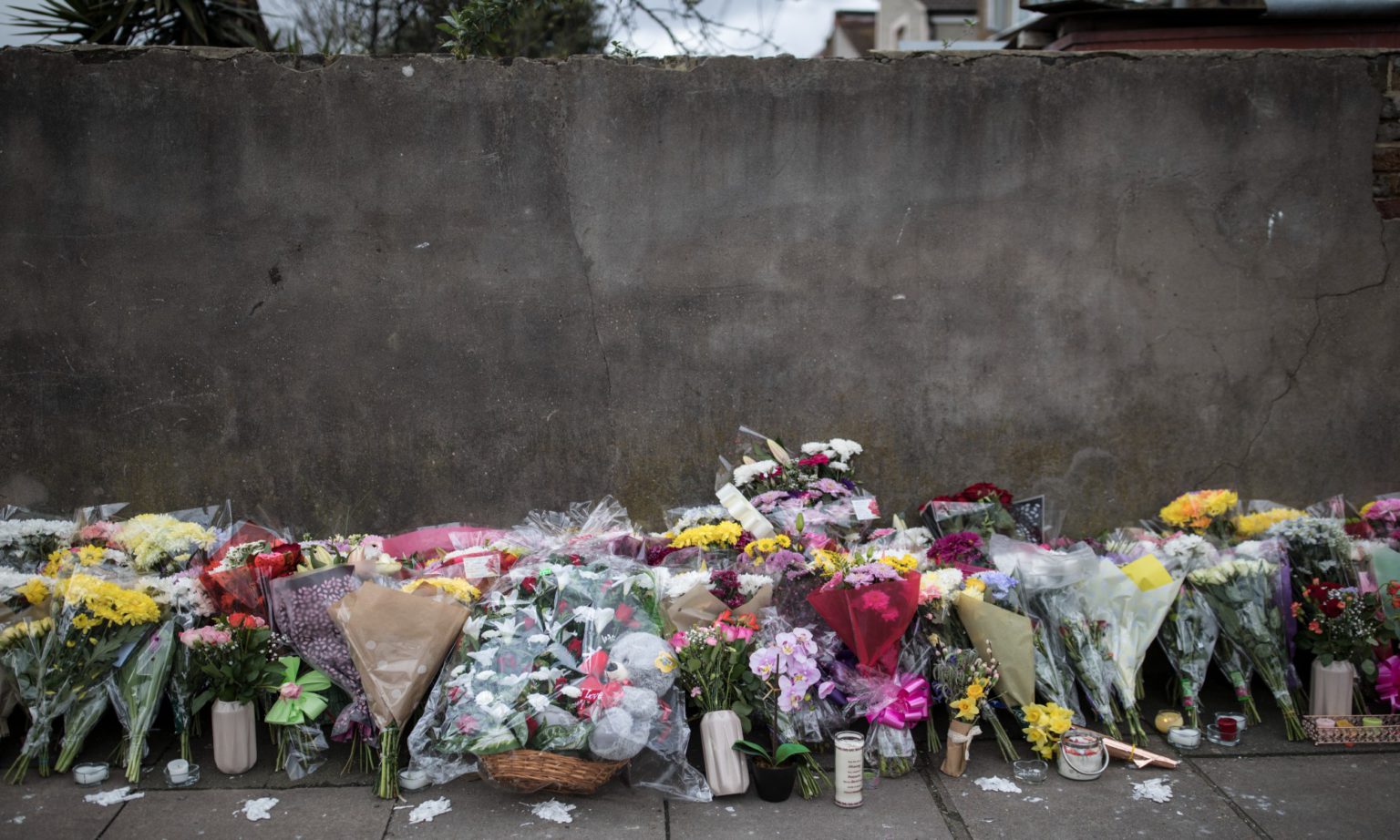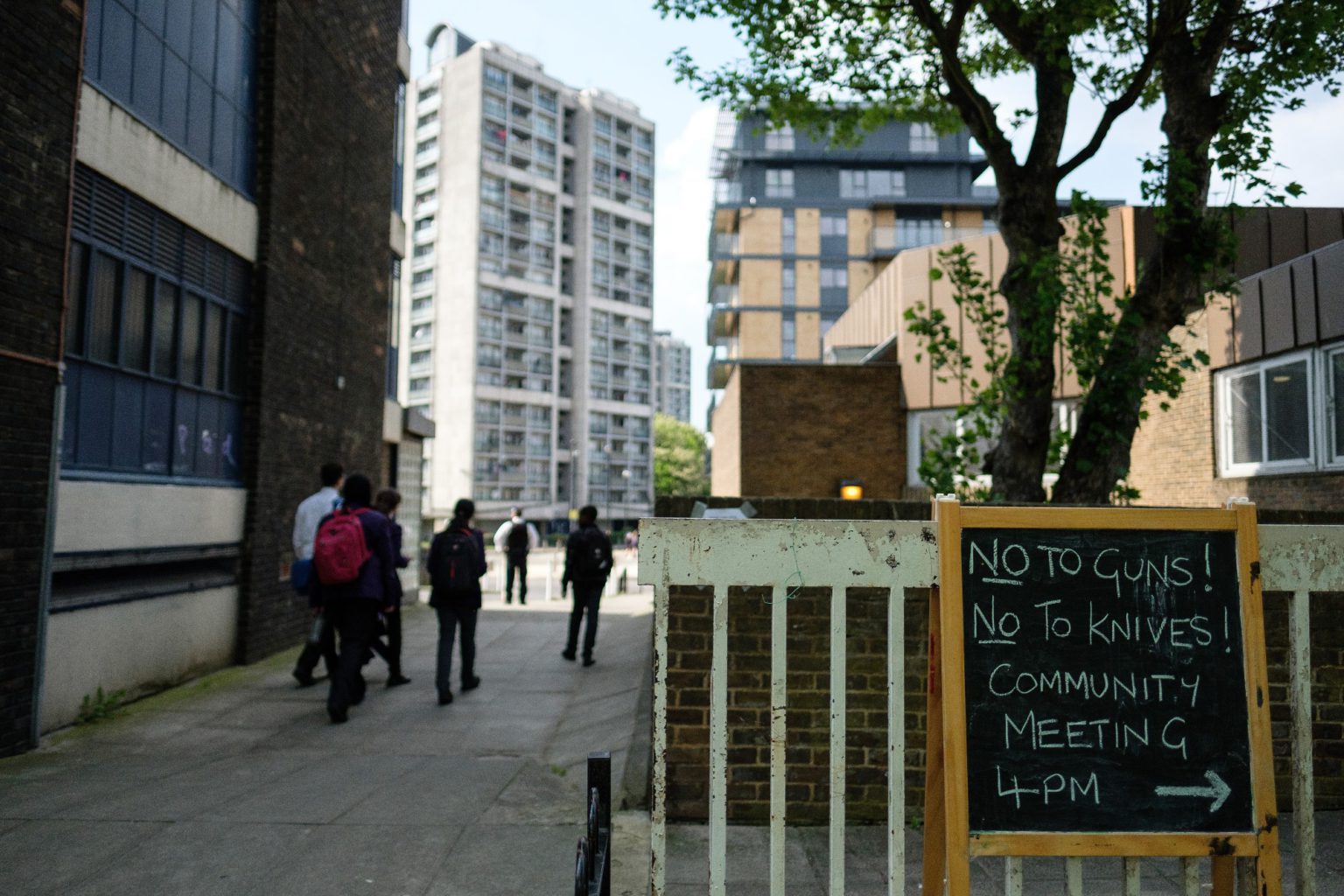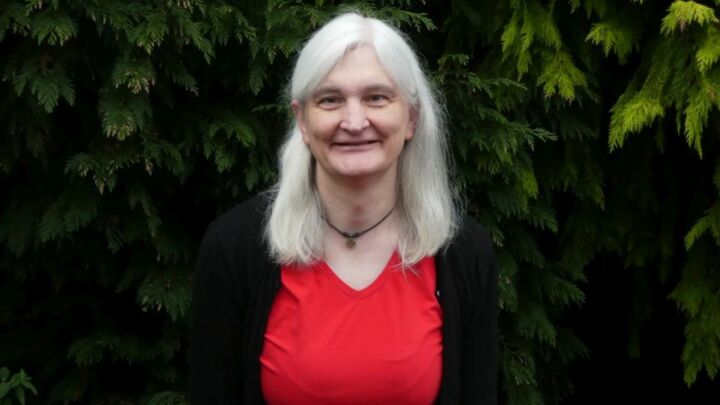
Long-read
Why are our young people killing each other?
It is not enough to blame knife crime on cuts to youth services or absent fathers.
Youth violence is now endemic in parts of the UK, especially in London. In the first seven months of 2021, 22 young people were murdered in the capital alone. This is more than were killed during the entirety of 2020. The Metropolitan Police have said that London is enduring a level of youth violence comparable to the grim highs of 2018, when 28 teenagers were killed.
Knife crime in particular is on the rise. As figures for England and Wales show, there were 726 murders in 2018 and 285 of these involved a knife or a sharp instrument.
Moreover, this rising tide of youth violence and knife crime is disproportionately affecting young black and Asian men. NHS data show that 27 per cent of knife-crime victims admitted to hospital in 2017-18 were from a black, Asian or ‘mixed heritage’ background, even though people from these backgrounds represent just 14 per cent of the general population.
Today’s youth violence also has specific and disturbing characteristics. Many of the killings – loosely and perhaps inaccurately described as ‘gang murders’ – increasingly occur in public. They often involve large groups targeting one or two other individuals. Some are related to ‘postcode’ disputes, others arise out of petty arguments and some can be traced through cycles of violence that go back many years. Indeed, the secretive ‘wars’ between different areas of working-class London are often spoken about in music videos and on social media.
But not everyone is convinced there is a problem.
A moral panic?
Many academics and commentators claim that the public focus on this surge of violence among young people is part of a moral panic.
The term ‘moral panic’ was coined by sociologist Stanley Cohen in his 1972 book, Folk Devils and Moral Panics, and then adopted by sociologist Stuart Hall to explain the hyped-up sociopolitical response to ‘mugging’ during the 1960s and 1970s (1). Hall argued that the response was not justified by the actual crime stats. It was motivated, rather, by an attempt to demonise young black men, and justify the use of draconian police tactics against them.
Likewise, academics today use this idea of a moral panic to explain the media and political response to today’s youth violence. This response, they argue, is just a thinly veiled way of presenting young black men as threatening, which then justifies increased police intervention, especially aggressive stop-and-search tactics.
There is a grain of truth to this analysis. The response to youth violence does often distort the problem. Judges will still routinely refer to those involved in youth violence as living by the ‘law of the jungle’ – a deeply unfortunate turn of phrase all too redolent of the discussion of black muggers in the 1970s.
So we should certainly be sceptical about aspects of the presentation of, and response to, youth violence. But this is not a moral panic. It is a serious problem, and it is getting worse. In 2018-19, there were 259 homicides using a sharp instrument (39 per cent of all homicides). This is the highest recorded number since specific data on knife-related violence started being collected in 1977.

Offences involving knives or sharp instruments rose by 17 per cent between 2017 and 2018, from 34,569 offences to 40,469. This was the highest number since 2011, the earliest point from which comparable data have been available. Between April 2017 and March 2018, NHS hospitals in England reported 4,986 admissions for assault by a sharp object, an increase of 15 per cent. Hospital admissions for knife wounds are now comparable to the highs of the mid-Noughties.
A cycle of violence
To understand the problem of youth violence today, it is useful to look at a few related cases in the London area at the start of 2018.
On 3 February 2018, 22-year-old Kwabena Nelson was murdered in Tottenham, north London. He was driving home when a Honda Civic ploughed into his car. A group of men, alleged to be part of a gang, the Wood Green Mob (WGM), alighted the Civic and stabbed Nelson repeatedly. He managed to call 999 before collapsing.
Nelson had reportedly ‘turned his life around’, having been involved with a gang called the Northumberland Park Killers (NPK) in his teens. At the time of his murder, he was a youth worker, attempting to steer young people away from gangs. So far, only one man, Neron Quartey, has been convicted in relation to Nelson’s murder.
On 8 March 2018, 19-year-old Kelvin Odunuyi was shot dead outside the Vue cinema in Wood Green. Odunuyi’s father owned a property business in Nigeria and paid for him to attend a private school in Yorkshire. His mother was a successful professional. Odunuyi’s DNA had been found on the inside of the Honda Civic that had crashed into Nelson’s car. It is thought his shooting was carried out by the NPK in retaliation for Nelson’s murder.
The shooting of 17-year-old Tanesha Melbourne on Chalgrove Road in Tottenham, in April 2018, was also linked to the feud between the NPK and the WGM. Following her murder, a social-media post linked to the killing read: ‘If your [sic] chilling with my ops [opposition] I ain’t gonna adjust my aim for you.’ A second message, posted over a black screen, read: ‘We got him down in Tinseltown [a diner in Farringdon where a fight had broken out earlier in 2018], and his girl down by Chalgrove… #NPK.’
Other killings in 2018 were connected in similar ways. In February, Abdikarim Hassan, 17, and Sadiq Aadam Mohammed, 20, were both murdered, within two hours of each other, in Camden, north London. Isaiah Popoola, who was 19 at the time of the murder, is serving a life sentence for the manslaughter of Hassan and the murder of Mohammed, while Godwin Lunghy, who was 17 at the time of the killings, was jailed for Mohammed’s murder in 2020. They identified with a Camden gang, and had decided to avenge the murder of their fellow ‘gang member’, 19-year-old Lewis Blackman, who had been killed a few days earlier.

Other killings in 2018 involved young people with no apparent connection to gangs. Model Harry Uzoka was 25 years old when he was stabbed by fellow model, 26-year-old George Koh, in Shepherd’s Bush on 11 January that year. The incident followed a dispute over a mutual love interest. Uzoka, armed with a dumbbell bar, arranged to meet Koh, who turned up with two knives. Koh’s co-defendant, Merse Dikanda, attended with a machete. The stabbing occurred in broad daylight in a place where children were playing.
The victims and perpetrators can be horrifyingly young. On 14 March 2018, six boys, all under 18, chased 18-year-old Lyndon Davis down an alley in Romford and stabbed him to death. On 23 June 2018, 15-year-old Jordan Douherty was murdered outside a youth club, also in Romford. The attack, and Douherty’s death, was filmed and shared on Snapchat.
None of these murders can be meaningfully connected to organised crime. Those that are – such as the killing in January 2019 of 14-year-old Jaden Moodie, who was carrying 39 wraps of crack cocaine, a mobile phone and £325 in cash – are the exceptions, not the rule. Instead, these brutal, tragic killings are often driven by petty social disputes, some of which are connected to particular geographical rivalries.
Nihilism and the absence of shame
One of the most notable aspects of this surge in youth violence is that it increasingly occurs in public. Victims are attacked at parties, in parks or on shopping streets. This year alone we have seen a 20-year-old man stabbed during a brawl at Selfridges on Oxford Street, the daylight stabbing of a 17-year-old in Hyde Park, and the killing of a 23-year-old during the filming of a music video in Brixton.
The unashamed nature of these crimes, carried out in full view of the public, marks them out. It indicates the perpetrators’ lack of shame, guilt and even concern about being caught. And this points to the existence of a deeply nihilistic attitude among some young people. They have come to believe that murder, robbery and serious violence are just part of everyday life.
A solicitor who deals almost entirely with young men accused of murder recounted a story to me which emphasised the depth of the problem. She was representing a young man in police custody, and had to tell him he was facing three charges of conspiracy to murder. In other words, he was being accused of planning the killing of three people. He was being accused of being a serial killer. ‘He didn’t seem bothered’, she told me. ‘I may as well have told him they were accusing him of killing 20 people. I certainly seemed to care a lot more than he did.’ That is indicative of the broader nihilistic culture in which these young people live.
Some academics see such a characterisation as unnecessarily derogatory. They do not see a nihilistic culture. They see so-called ‘road culture’ – a loose set of attitudes and outlooks typical of young, mainly black men living in urban poverty. Road culture involves ‘trapping’, or committing crime as a response to economic hardship. For writer and researcher Anthony Gunter, road culture is an understandable, albeit regrettable, response to the effects of austerity and material deprivation.
The problem with this idea of road culture is that many of those involved in violent crime do not fit the stereotype. These young men are not all financially stricken. Many are upwardly mobile – some are in higher education, and some are even in salubrious occupations.
Of course, economic deprivation is a significant factor in some of these incidents. But it is insufficient as an explanation – especially as far poorer areas of the UK are not afflicted by youth violence in the same way.
Moreover, the academic defence of road culture almost excuses the awful impact it has on those immersed in it. Even those not involved in serious violence can find themselves drawn to petty offending. At the very least, road culture normalises the possession of weapons. Yes, road culture provides young people with a social circle. But it also renders crime and violence mundane and acceptable.
Excusing the problem
There is no shortage of facile explanations from both the left and the right for the development of this nihilistic youth subculture. Most common is the claim that cuts to youth services are to blame.
Yet those making this claim fail to show how expanded youth services would prevent any actual instances of violence. Consider Wood Green and Tottenham, where youth violence and knife crime have been particularly pronounced. These areas are not short of youth clubs. Moreover, how would youth services have successfully intervened in some of the cases cited above. Can we really say that these young people were crying out for a youth worker? Kwabena Nelson was a youth worker himself when he died. Youth services would have had no reason to identify someone like boarding-school boy Kelvin Odunuyi as being at risk. And Harry Uzoka was a successful model – he would have had no reason to seek help from youth services.

Even the perpetrators of these crimes dismiss the facile explanations provided by commentators. I recently worked on a case from 2010, involving a cycle of violence centered on an estate in west London. Five young people had died in the space of a few months. It appeared to have grown out of a petty dispute among young men who had been friends all their lives. The man I was working for had been convicted of murder and sentenced to life in prison. In the course of one of our phone calls I asked him: do you think that deprivation, or the closure of youth clubs, had anything to do with this violence? He thought for a moment. Then he burst out laughing.
Blaming cuts to youth services and austerity have become easy ways for columnists and politicians to create the illusion of caring about a problem to which they have no real solution. These explanations pay no attention to the particular circumstances in which these outbreaks of violence and killing occur. And they do not even resonate with the perpetrators themselves.
Others have sought to blame absent fathers for youth violence. Labour MP David Lammy said that this was a ‘key cause’ of knife crime in 2012. Other figures, including senior police officers, have echoed Lammy’s sentiments recently.
Of course, fathers play an important role in socialising young men. But the vast majority of one-parent families, black or white, do not raise nihilistically violent children. And the available Home Office research into serious violence does not point to absent fathers as an important indicator.
Others blame gentrification for upending the communities that would once have prevented young people from sliding towards violence. This is arguably the most ridiculous explanation of them all. It fails to explain why so many communities that have been impacted by gentrification across London do not slip into nihilistic violence.
The importance of solidarity
Facile explanations prevent us from addressing the key problem – namely, the nihilistic culture in which violence and knife crime have flourished. We are failing to look at why certain young people are making the moral choices that they are.
The situation is made worse by predominantly white, middle-class liberals telling young black men that they are doomed to live in a ‘systemically racist society’. This hopeless, fatalistic worldview actively fuels the nihilism of young people. Yes, racism is still a problem today. But it is dangerous to let young black men believe, falsely, that they have nothing to gain from engaging with the society around them.
Likewise, ramping up police powers only makes the problem worse. Stop-and-search, for example, is an important tool. But, when used by an under-resourced police force, it reinforces young people’s resentment and nihilistic rejection of adult society. The same goes for the newly introduced knife-crime prevention orders, which can be imposed on anyone who is known or suspected to be a regular knife carrier. They can involve curfews or bans on associating with certain people, and any breach of these orders is a criminal offence. Given the low standard of proof entailed in knife-crime prevention orders, they dilute legal standards and needlessly criminalise swathes of young people.
The blind appeal to stronger laws, like the desire to blame everything on ‘systemic’ racism, will only add to the sense of isolation and victimisation that allows murderous nihilism to thrive in the first place.
This is why we urgently need to develop social solidarity. This is not as abstract as it sounds. We as adults should all take responsibility for socialising young people through informal networks of support, be it offering work experience, or providing any kind of opportunity for young people to develop. Such actions can help forge social bonds and help us build meaningful communities.
Too often, it is assumed that knife crime and youth violence are best solved by someone else – by the state, by youth workers or by the police. But, in reality, we can do a lot ourselves to create the conditions we need to end the violence.
We have to stop the killing. And we have to dismantle the alternative moral community that harbours it. This will require encouraging a sense of social solidarity that goes beyond skin colour. And above all, it will require looking these young men in the eye and taking them seriously as our fellow citizens.
Luke Gittos is a spiked columnist and author. His latest book, Human Rights – Illusory Freedom: Why We Should Repeal the Human Rights Act, is published by Zero Books. Order it here.
(1) See Policing the Crisis, by Stuart Hall et al, MacMillan, 1978
Picture by: Getty.
To enquire about republishing spiked’s content, a right to reply or to request a correction, please contact the managing editor, Viv Regan.











Comments
Want to join the conversation?
Only spiked supporters and patrons, who donate regularly to us, can comment on our articles.